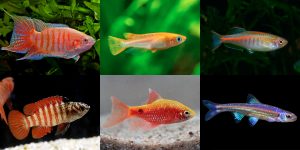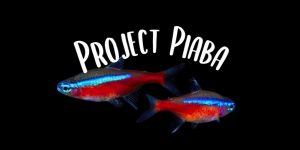A Norwegian system of AI-powered river gates looks set to protect British waters from the growing threat of harmful non-native fish species.
- Norway is successfully using artificial intelligence to combat invasive pink salmon.
- AI-powered river gates in Norway only open for native species like Atlantic salmon.
- The system uses facial recognition technology commonly seen in airports.
British waters have long faced threats from invasive, non-native fish species. The main offenders include bitterling, grass carp, pumpkinseed, topmouth gudgeon, and zander. These have existed in the UK’s rivers, lakes, and other bodies of water for decades. Some are more damaging than others, but they haven’t necessarily proved catastrophic for native fish overall.
However, there’s a relative newcomer on the scene posing a much more significant threat. That newcomer? Pink or hump-backed salmon arriving from the surrounding seas via our estuaries. Experts believe that these non-native salmon are establishing breeding colonies in British waterways. As a result, there’s evidence that native Atlantic salmon could be pushed out.
A Similar Tale to That of the Native Red Squirrel
While non-native fish like the small topmouth gudgeon from Asia or the North American pumpkinseed aren’t great for our aquatic ecosystems, these species haven’t really wreaked havoc.
Unfortunately, the same likely cannot be said of pink or hump-backed salmon based on experiences elsewhere in Europe. Experts liken the threat to that which non-native grey squirrels continue to pose to our smaller, prettier red ones. Invasive grey squirrels have all but replaced red squirrels in the UK, and now the race is on to prevent the same happening with our native salmon.
It’s hoped that an AI-powered system pioneered by Norwegian scientists could be the answer.
Hump-Backed Salmon Shall Not Pass!
The Norwegian system uses artificially intelligent river gates. These gates employ what’s essentially facial recognition technology like that seen in airports. Fish approaching the gates are rapidly photographed, identified, and then allowed to pass—or not—depending on their species.
Atlantic salmon are allowed through. Meanwhile, invasive pink or hump-backed salmon are diverted into special holding tanks. These holding tanks are then emptied back into the surrounding seas where the fish technically belong, albeit coming from the faraway Pacific coasts of Russia and North America.
Atlantic Salmon Trust to the Rescue
This summer, the Atlantic Salmon Trust, based in Perth and Kinross in Scotland, will send a team to Norway. They’ll head to Norway to explore the possibility of safeguarding UK rivers against invasive pink salmon using the same technology already protecting the Nordic nation’s river Storelva.
It’s hoped that if the positive results seen in Norway continue, the system could soon be rolled out in the parts of the UK currently forecast to be the worst affected. The Atlantic Salmon Trust says that the hump-backed invaders are a very credible threat to British waters and one that scientists and other experts must prepare for.
Promising Results in Norway
Results in Norway are promising. Reports suggest that the system operating in the river Storelva is around 90% effective. As the AI-powered system continues to learn, efficiency improves, too. That’s fantastic news for Norway’s waterways and bodes well for the adoption of a similar system in the UK.
Until recently, pink salmon were a rare sight in British rivers. Now, though, numbers are increasing, with a full-scale invasion feared this year or next. Crucially, the invaders hadn’t previously been thought to have bred successfully in UK waters. But last year, young hump-backed salmon were spotted in multiple rivers in northernmost Scotland for the first time, proving that the fish had started breeding in Britain.
We’ll know this summer just how prevalent the non-native pink salmon are becoming. That’s as the Scottish Environment Protection Agency plans to thoroughly test a number of different rivers for salmon DNA. They’ll then use the results to establish how widespread pink or hump-backed salmon are in Scottish waters.
Anyone who encounters what they believe to be a pink or hump-backed salmon in Scottish waters in the meantime is encouraged to report it using the Fisheries Management Scotland app. If the same fish are spotted elsewhere in British waters, the UK government’s Environment Agency should be informed.






